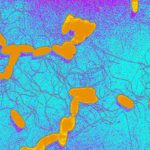Link to Pubmed [PMID] – 22205822
J. Clin. Microbiol. 2012 Mar;50(3):709-20
Salmonella enterica serovar Stanley (S. Stanley) is a common serovar in Southeast Asia and was the second most common serovar implicated in human salmonellosis in Thailand in the years 2002 to 2007. In contrast, this serovar is relatively uncommon in Europe. The objective of this study was to characterize a collection of S. Stanley strains isolated from Thai (n = 62), Danish (n = 39), and French (n = 24) patients to gain a broader understanding of the genetic diversity, population dynamics, and susceptibility to antimicrobials. All isolates were characterized by pulsed-field gel electrophoresis and antimicrobial susceptibility testing. The molecular mechanisms of resistance to extended-spectrum cephalosporins and plasmid-mediated resistance to quinolones were characterized by PCR and sequencing. Plasmid profiling, replicon typing, and microarray analysis were used to characterize the genetic mechanisms of antimicrobial resistance in 10 extended-spectrum cephalosporinase-producing isolates. Considerable genetic diversity was observed among the isolates characterized with 91 unique XbaI pulsed-field gel electrophoresis (PFGE) patterns, including 17 distinct clusters consisting of two to seven indistinguishable isolates. We found some of the S. Stanley isolates isolated from patients in Europe were acquired during travel to Southeast Asia, including Thailand. The presence of multiple plasmid lineages carrying the extended-spectrum cephalosporinase-encoding bla(CMY-2) gene in S. Stanley isolates from the central part of Thailand was confirmed. Our results emphasize that Thai authorities, as well as authorities in other countries lacking prudent use of antimicrobials, should improve the ongoing efforts to regulate antimicrobial use in agriculture and in clinical settings to limit the spread of multidrug-resistant Salmonella isolates and plasmids among humans and pigs in Thailand and abroad.

